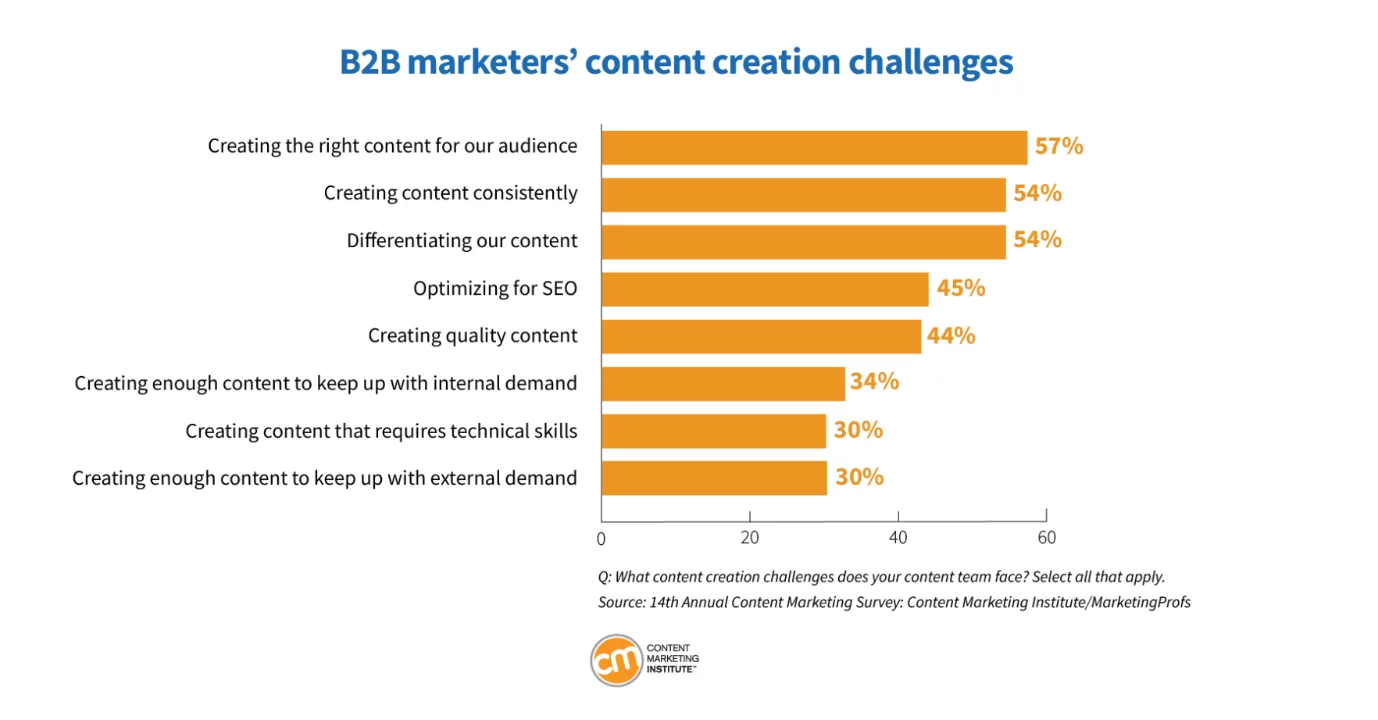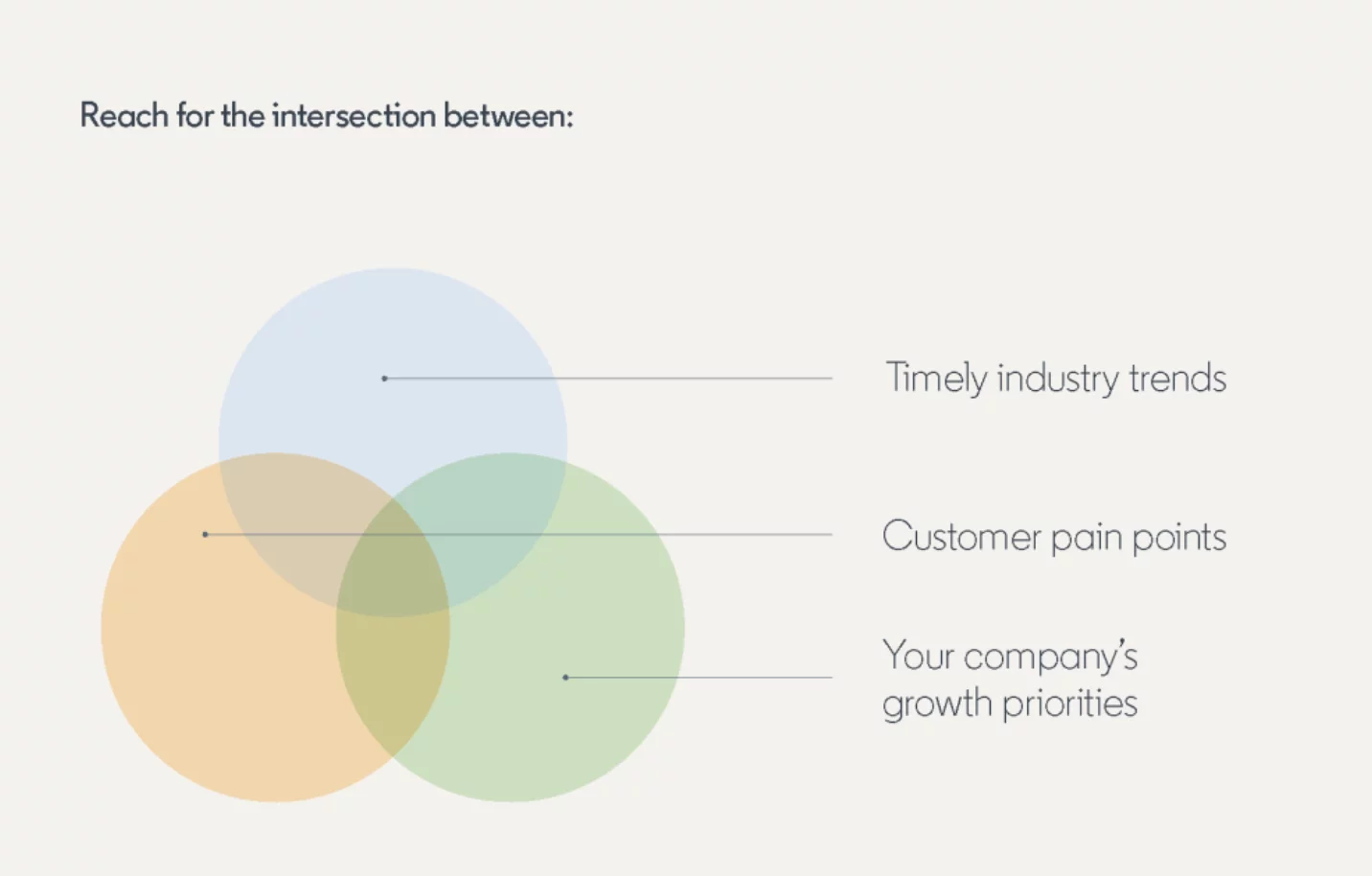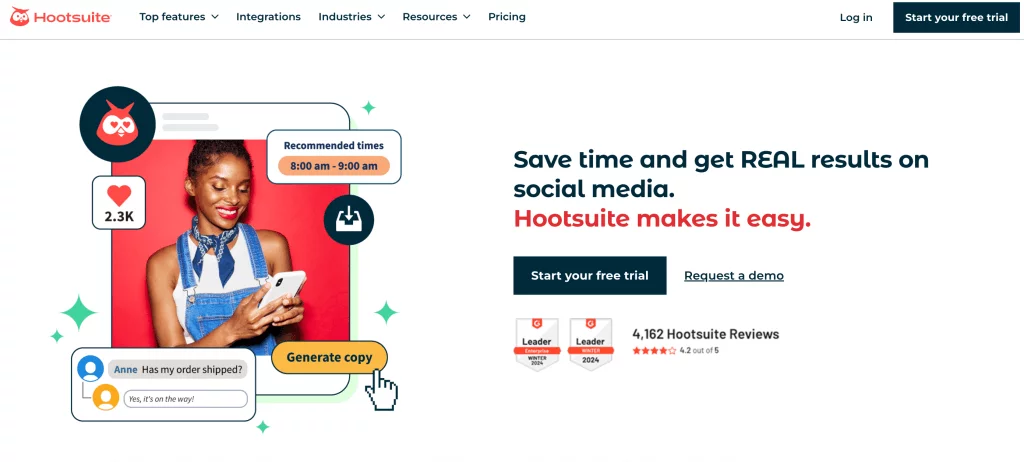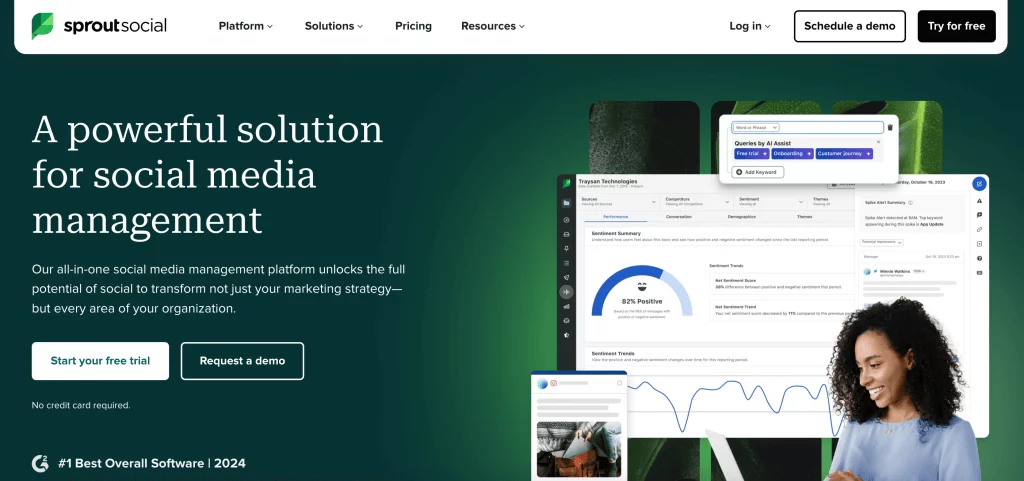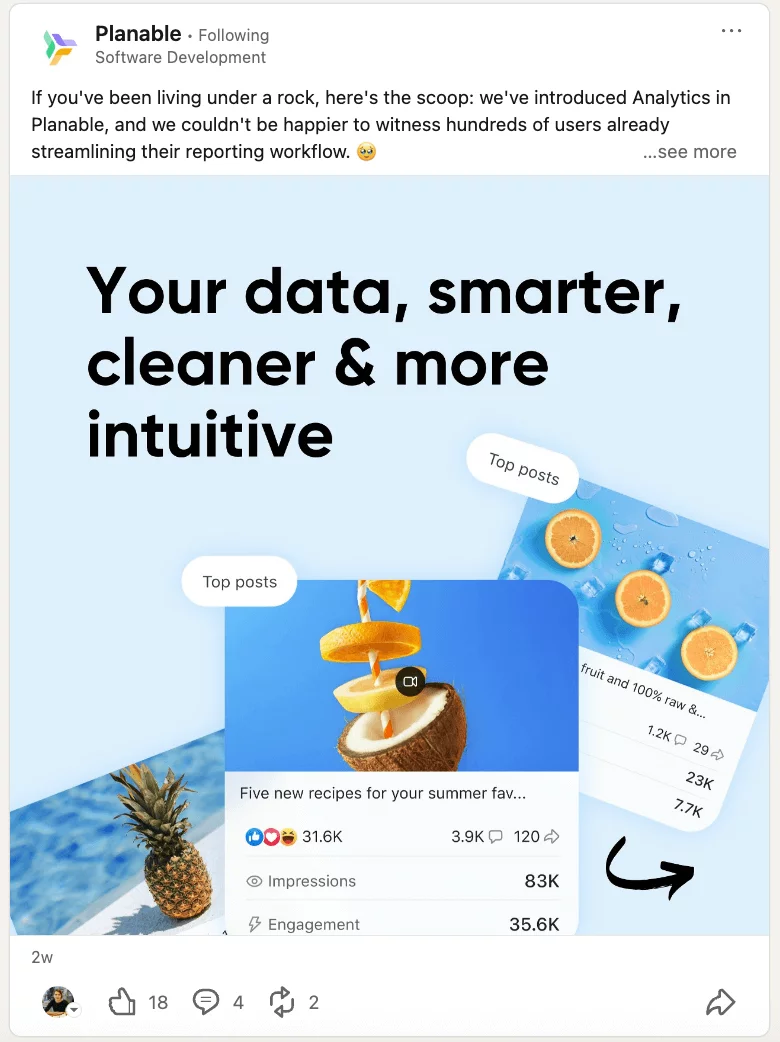LinkedIn has become one of the main platforms for professionals to demonstrate expertise and grow their network and personal brand. However, consistent posting is key, and that’s where many get stuck.
Are you feeling overwhelmed by managing your own LinkedIn presence or that of multiple clients? A LinkedIn content planner is a great way to get organized, save time, and think strategically.
Read on to find out how to create a LinkedIn planner step by step, what tools to leverage for efficiency, and how to position yourself as a sought-after professional in your niche.
Contents
What is a LinkedIn content planner?
A LinkedIn content planner is a tool for organizing and scheduling content for your LinkedIn company page or personal profile. It’s a roadmap that includes marketing goals, target audiences, types of content, and needed resources. A planner gives you a bird’s-eye view of your LinkedIn posts to understand what’s missing, what needs improvement, and when to act.
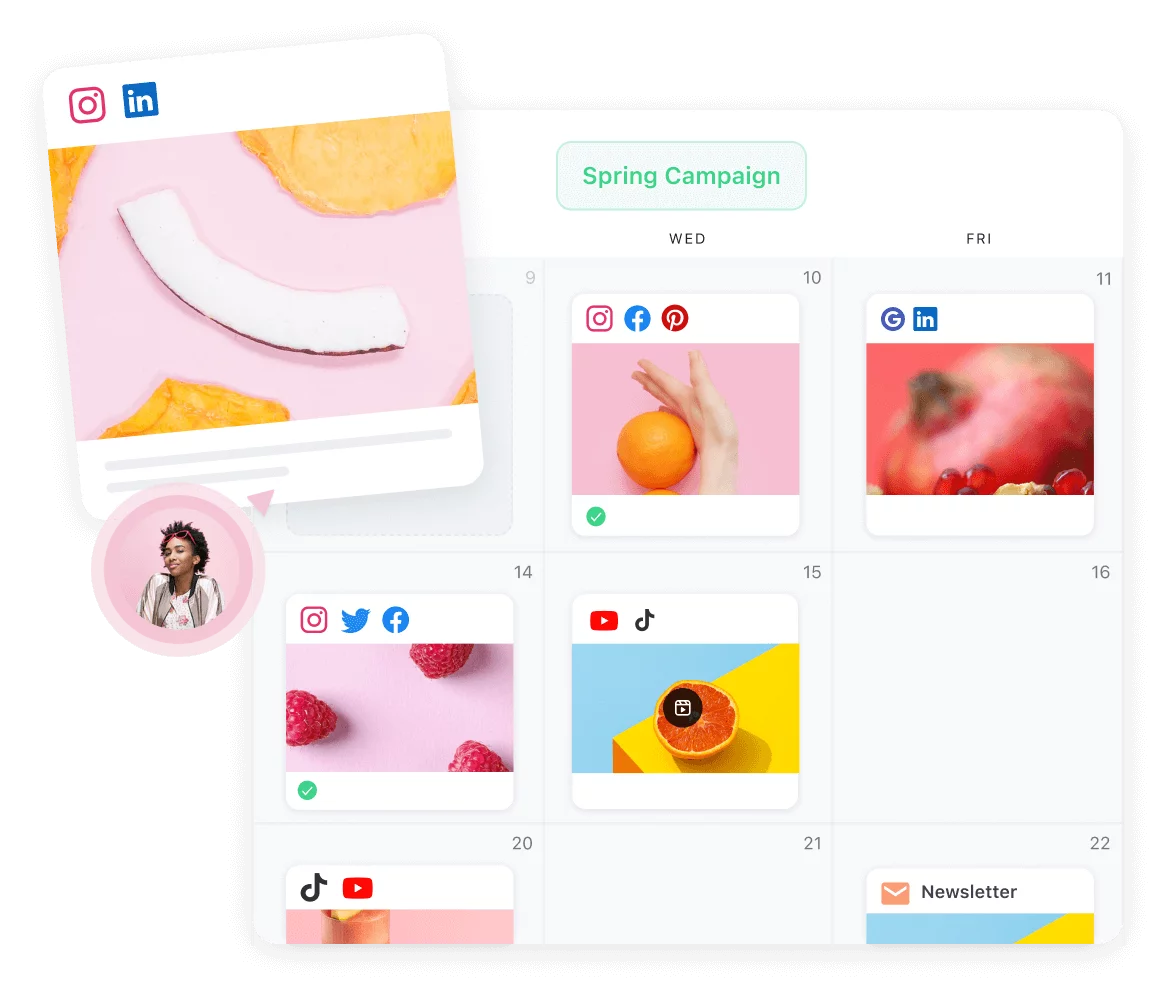
Integrated LinkedIn content planner in Planable
Essential features of a LinkedIn planner
Publishing content and building brand awareness is easier with a content planner that lets you do the following:
- LinkedIn strategy collaboration
Posting on a whim will not produce stellar results, if any. A planner should enable your team to easily collaborate on a medium—or long-term strategy and to brainstorm key topics, create various types of posts, and refine the messaging.
- Content scheduling
Manually publishing each post is resource-intensive and unnecessary, with so many LinkedIn tools that simplify the process. With a planner that has scheduling capabilities, you can organize the content weeks in advance and always be a few steps ahead. Never think “I haven’t published in a while” again.
- Collaboration on LinkedIn posts
If you’re a freelancer or agency, you most likely manage several LinkedIn pages with input from clients and colleagues. In this case, you need a planner that lets you ask for and receive feedback, assign comments, set up approval layers, and create workflows.
- Scalability
Maybe you’re publishing content on LinkedIn for one client now, or perhaps you’re running a small team, and collaboration is straightforward. However, businesses change and grow, so the planner should be scalable to accommodate various needs and content marketing efforts without going through the pain of switching tools.
Remember that a planner’s role is to streamline and simplify content creation. Speaking of, let’s see how to create a content strategy for a successful LinkedIn presence.
Step-by-step guide to creating a LinkedIn content plan
LinkedIn is a great place to share professional expertise, lessons learned, and industry trends. You help the community with valuable insights and get recognition as a thought leader in return. Win-win.
Step 1: Define your objectives and audience
LinkedIn marketing can have many benefits, but you have to focus. I’ve seen company pages or personal profiles where there was clearly an effort to be more active, but communication was all over the place.
Start by defining your objectives, ideally in line with your bigger social media marketing strategy. Decide whether you want to build brand awareness, establish yourself as a thought leader, get more leads, or improve your employer branding.
Your audience, messaging, and content will differ depending on your goal. For example, if you want to get leads, you will target potential buyers with educational content about your products or services. If you’re looking to be a desirable employer, you’ll be addressing a whole different LinkedIn audience with messages about company culture, values, benefits, and so on.
Want to tackle more than one goal? That’s doable, but you have to be clear about it and plan accordingly.
Step 2: Plan your publishing schedule
I’d love to have a magic recipe for getting engagement on LinkedIn — or other social media platforms. But I’ve been in the marketing game long enough to know that recipes don’t exist or last.
What matters most is consistency. And studies show that it continues to be one of marketers’ biggest challenges.
Aim for a constant rhythm (at least two times per week) and avoid publishing spur-of-the-moment. The best way to do this, both from a strategic and time management perspective, is to use a LinkedIn content planner that allows you to plan, organize, approve, and schedule posts in advance.
Step 3: Create engaging long-form content
A while back, long-form content was written for blogs and websites, while social media copy was short and snappy. While that’s still true for some platforms like TikTok, people have been successfully posting longer posts on LinkedIn, Facebook, or even Instagram.
Writing 100-200-word posts for LinkedIn is a common practice among influencers in various industries. Longer posts give you the opportunity to share lessons and expertise in more depth, add examples or brief case studies, and elaborate on trends.
Long-form content can help you engage your audience and establish credibility, so don’t be afraid to try it. Use a versatile social media management tool to seamlessly plan, set up approval workflows, and publish both short- and long-form content. Having everything in one place will help you stay focused and consistent and elevate your LinkedIn content.
Step 4: Monitor key metrics for success
Keep an eye on industry benchmarks but a closer one on your brands’ analytics. Every target audience is different. To optimize your content calendar, you must see how your content performs over time and understand your audience’s behaviors and preferences.
Key metrics to track:
- Content analytics. Look at views and impressions to understand reach and compare engagement across different posts to see what works better and where you can improve.
- Visitor metrics. Understand how many people visited your page and whether they are your targeted audience or if you’re reaching the wrong people.
- Follower highlights. See how many people followed you over a period of time, if the follow rate is increasing or decreasing, and take a closer look at the people behind the numbers. You might discover some opportunities to connect.
- Competitive data. If you add competitors to the LinkedIn dashboard, it will provide insights into their performance so you can compare and improve your content marketing strategy.
Let’s look at some planning tools that can help any freelancer, marketing manager, or entrepreneur streamline their LinkedIn content strategy.
LinkedIn content planning tools
1. Planable
If you want to streamline and fire up your LinkedIn content distribution, Planable is your go-to tool.
I said that consistency is the key to success. For that, you need a content calendar where you can plan, schedule, and review content anytime. Planable’s great visual interface makes it easy to view upcoming posts on all social channels, notice inconsistencies or gaps, and ensure everyone is on track and playing to the same publishing beat.
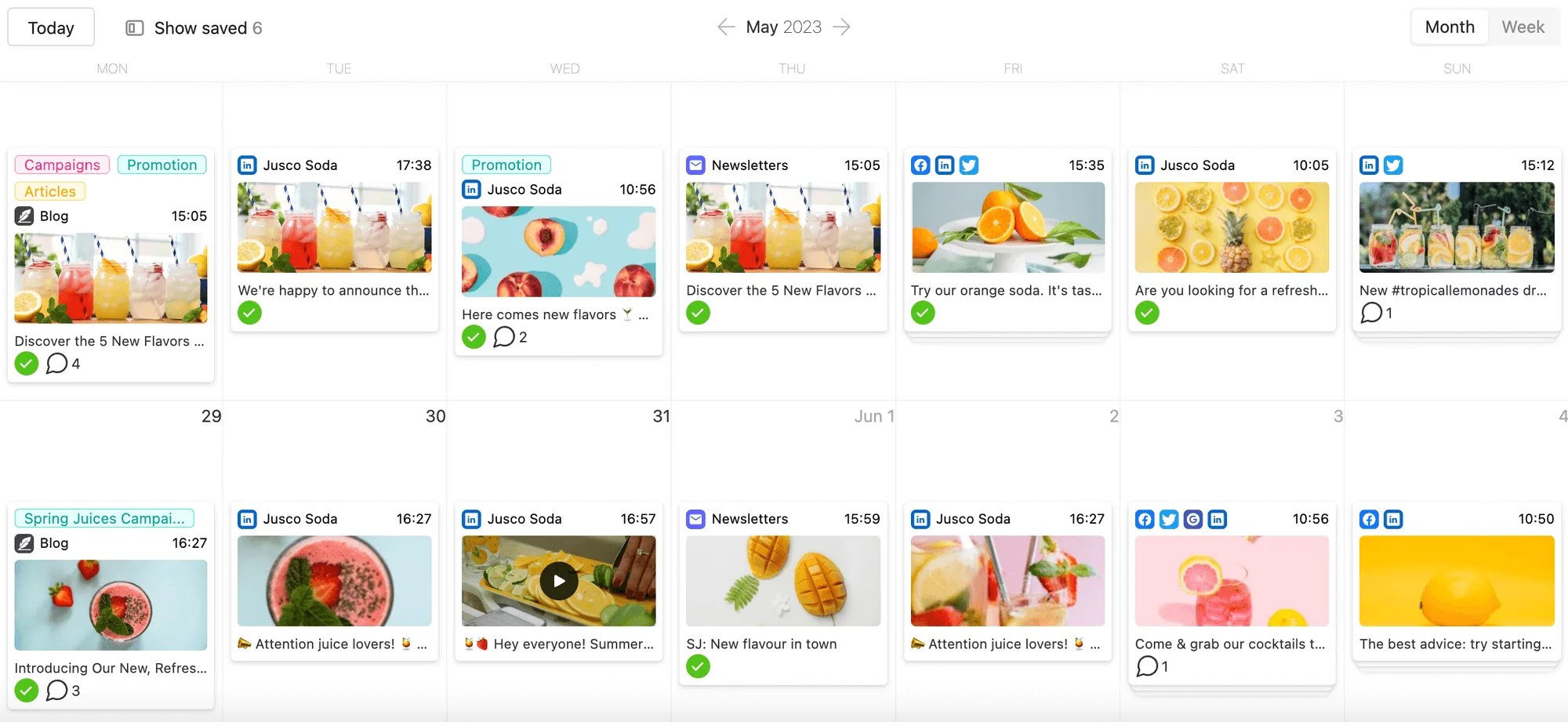
Social media content calendar for LinkedIn in Planable
The collaboration features the platform provides are also making Planable a marketers’ favorite.
Write, create, and collaborate on any type of content. Get real-time comments, clear text suggestions, and set up multi-level approval layers. Whether working solo with clients or managing a complex team, it’s easy to keep track of feedback and remove decision bottlenecks.
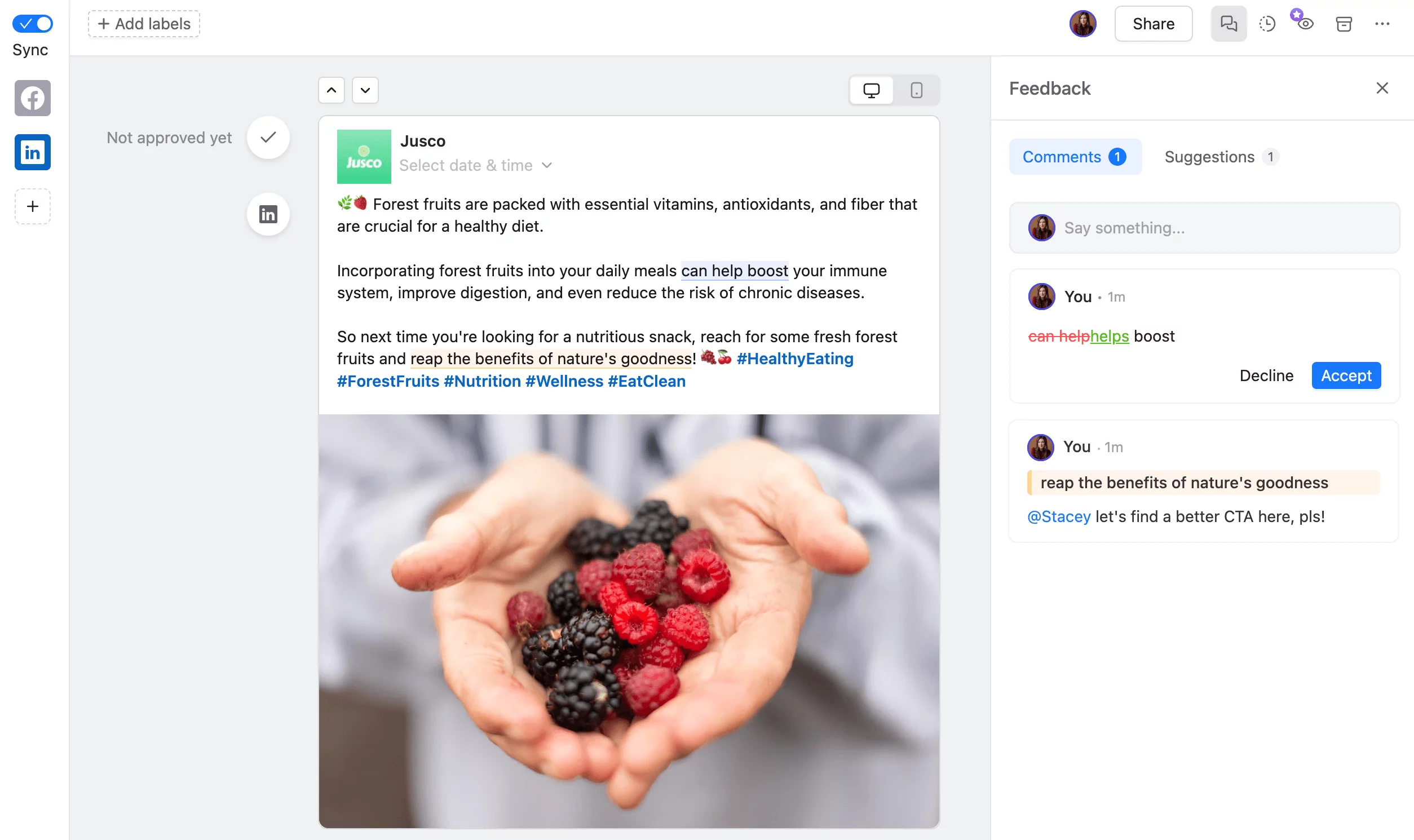
Collaboration on a LinkedIn post in Planable with suggestions and comments
Once the content has been created and approved, you can simply schedule the LinkedIn post directly from the platform. You can preview posts anytime, recycle them, or get AI help to refresh your copy.
Besides managing your LinkedIn brand page, Planable enables you to connect employee profiles. This helps with maintaining brand consistency and supports employee advocacy efforts.
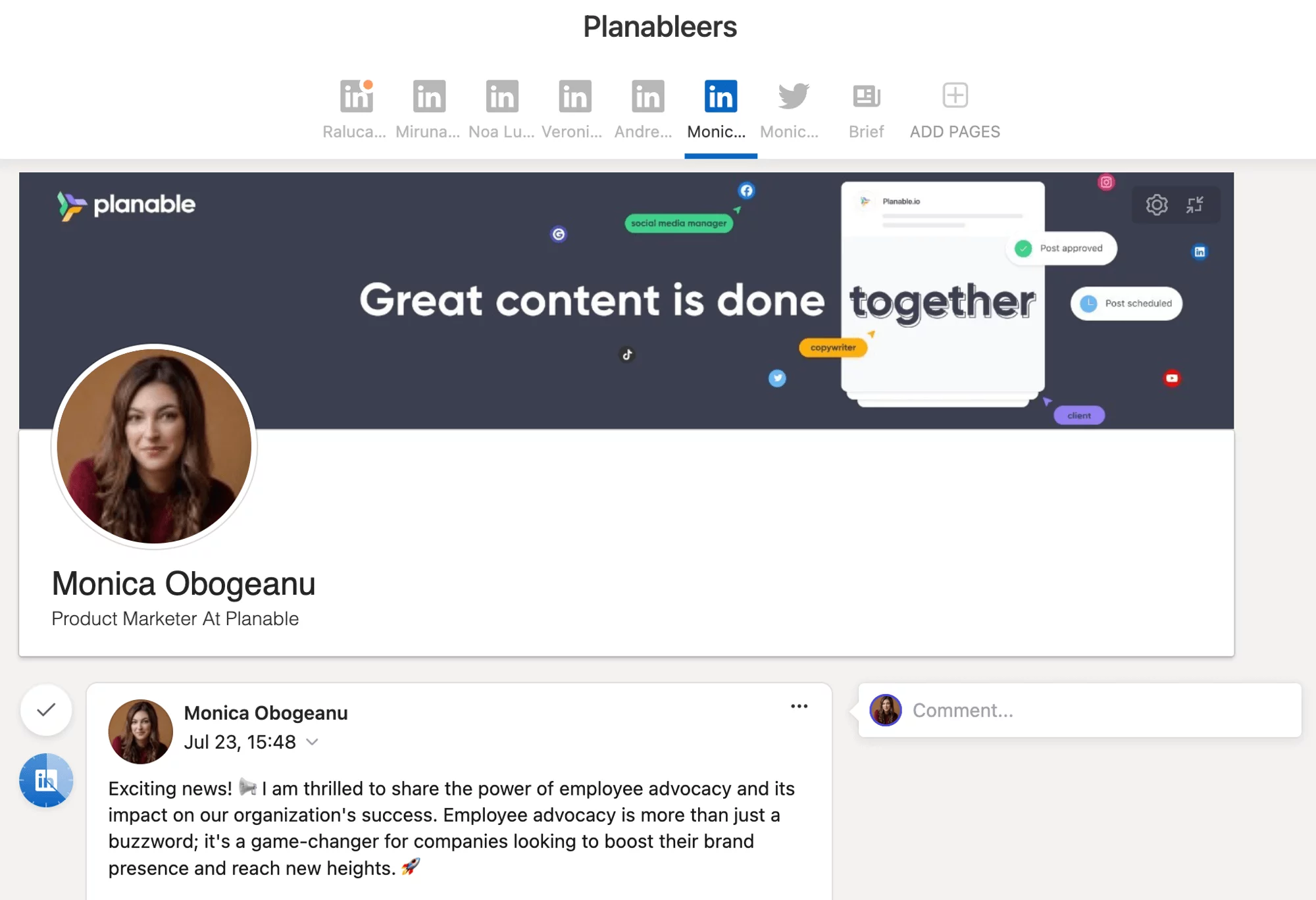
Employee LinkedIn profile in Planable’s workspace
And no plan is complete without measurement and optimization. Planable also includes Analytics, including LinkedIn, so you can access all insights at a glance without having to switch platforms.
Drawbacks: Planable does not offer social media listening features.
Pricing: Planable offers a free plan for up to 50 posts. The Basic Plan starts at $11 per month/user and offers unlimited posts, several pages per workspace, different views, and types of approval.
2. Hootsuite
Hootsuite is a social media management tool that helps marketers schedule and publish content on LinkedIn and various other social channels, including Instagram, Facebook, TikTok, and Pinterest.
It offers social media analytics and social listening features, making it a valuable platform for those who want to get a comprehensive view of their marketing efforts and the competitive landscape.
Drawbacks: While offering many useful features, some users noticed limitations in post previews, content recycling capabilities, or the quality of the metrics. Another drawback is its steep pricing for smaller businesses, making it a better fit for enterprises.
Pricing: Hootsuite offers a free 30-day trial, after which pricing starts at $99 per month for one user and 10 social media accounts. A Team package is available for three users and 20 social media accounts for $249 per month (when paid annually).
3. Sprout Social
Sprout Social is another popular solution for social media management. It offers a wide array of features, including planning, creating, and publishing content for LinkedIn and other social media channels.
The platform helps enterprises and agencies manage their social media presence, offers access to competitive intelligence and analytics, and even supports employee advocacy efforts.
Drawbacks: Users are happy with the range of features offered, though some report that actual functionality is not always up to par and that customer service is not optimal. The price point also makes it less accessible to smaller teams and businesses.
Pricing: Sprout Social offers a free 30-day trial. The Standard package starts at $199/seat per month (when paid annually) and includes 5 social profiles. The Professional package costs $299/seat per month and offers unlimited social profiles and other additional features.
Benefits of using a content planner for LinkedIn
A planner is fuel for your LinkedIn content marketing strategy. The better and more streamlined the planner, the more speed you gain. Here’s why:
- Strategic view and alignment.
The content calendar keeps you on track by providing visibility, transparency, and a plan for action. A content planner that allows you to switch between views (like calendar, feed, or detailed post content) is ideal for getting a higher-level perspective or a more granular look to ensure that whatever is planned for the upcoming period supports business goals.
- Improved consistency
Yes, I will say it again for all those folks in the back: Consistency is key to achieving marketing goals. A content planner allows you to schedule posts ahead and ensure a constant publishing rhythm. The best ones also allow you to set up approval layers to get real-time feedback and stick to deadlines.
- Better audience engagement
By being strategic and consistent, you serve your audience better. With more data, you can also better understand what’s working and what needs adjusting. A LinkedIn planner backed by access to data empowers your team to create more engaging posts every time and optimize your LinkedIn strategy.
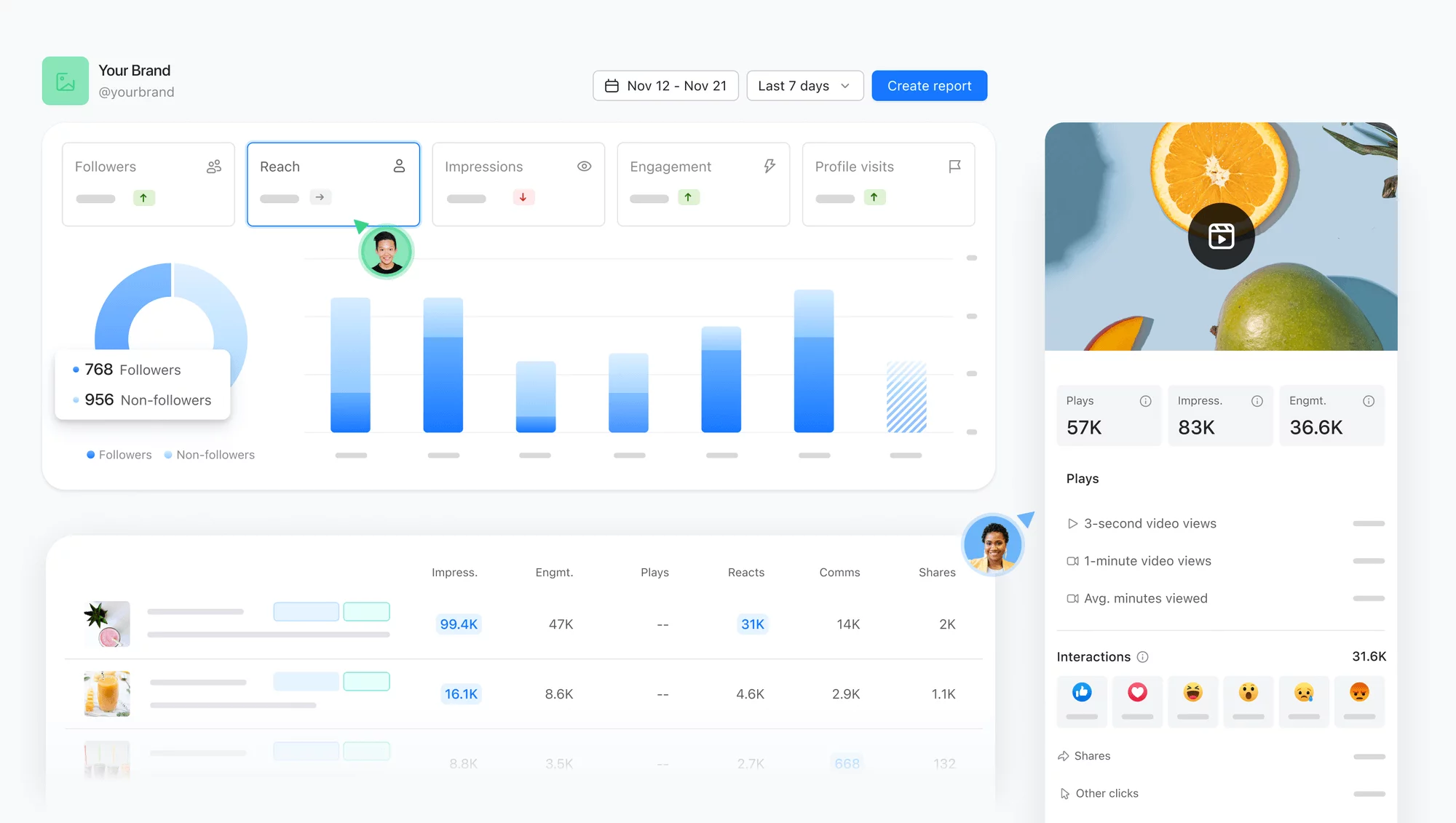
LinkedIn analytics in Planable
How does content strategy for LinkedIn work?
Your LinkedIn content strategy needs to be based on clear objectives and take into account your target audience. That’s a must! You should also consistently analyze your strategy’s performance and be ready to make any necessary adjustments along the way.
However, these are not the only key points to keep in mind. Here’s what else you should focus on when planning your LinkedIn content marketing strategy:
1. Content types
Craft content that solves audience problems and experiment with different formats to keep them interested. Here are a few content ideas to inspire you:
- Alternate between short- and long-form written content. Share in-depth LinkedIn articles showcasing your expertise and write insightful posts, but also keep it light with more concise, quick thoughts.
- Create captivating videos (native videos perform especially well). These can be fragments from an interview or speech you gave or shorts specifically created for LinkedIn.
- Leverage visuals. Use images, infographics, and attractive carousels to make your content easily digestible and highly shareable.
2. Consistency and frequency
Regular posting is as important as the quality of the content you publish.
While posting 2-3 times per week is ideal to be present in people’s feeds and more quickly achieve goals, that may be too much for some teams or individuals. Aim to show up at least once per week with relevant, valuable content. Make things easier by using dedicated LinkedIn tools.
Plan your content in advance, ensure post diversity (both in topic and format), and don’t forget to align with business events, industry trends, and seasonal topics.
3. Engagement and interaction
The more engagement your posts get, the more reach, brand awareness, and content effectiveness you achieve.
Encourage people to interact with your content by asking questions, running polls, and inviting comments. Tag relevant connections who could contribute with their opinion — without overdoing it.
Always respond to comments in a positive and constructive manner. Seize the opportunity to ask more intriguing questions that keep the conversation going.
4. Optimization and SEO
To make sure your LinkedIn profile or page ranks well in LinkedIn’s search and on other search engines:
- Use relevant keywords throughout your profile and in your posts and articles for better visibility.
- Ensure that your LinkedIn profile or brand page is complete and optimized for search, including the headline, bio or description, location, industry, experience, etc.
- Use high-quality profile and cover photos.
5. Personal branding
LinkedIn is a powerful tool for personal branding. When planning your content, keep in mind the following:
- Be authentic. Share pertinent personal and professional stories, insights from your own experience, and personal takes on trends.
- Be relatable. Even if you position yourself as an expert, aim to also be friendly and down-to-earth to encourage people to interact with you.
- Be professional. Remember that LinkedIn is a professional platform and that people expect to see relevant, polished content. A joke here and there or a light take is okay but keep an overall professional tone and attitude.
6. Collaboration and networking
LinkedIn is a great platform for building relationships and growing your network. To that end, you should:
- Engage with other people’s posts. Like good content to show your appreciation. Comment when you feel you can contribute to the conversation.
- Connect with industry leaders and influencers. Reach out to experts in your niche to connect and explore opportunities for collaboration.
- Encourage employees to share content and insights. Explain that being active on LinkedIn helps with their personal brand and increases awareness for their employer.
Don’t connect with people only to immediately pitch something. Instead, aim to create authentic, meaningful connections based on shared interests. Results will follow.
LinkedIn content planner template
In my experience, nothing beats using a template that everyone on the team (or outside of it) can collaborate on transparently.
The ideal LinkedIn planner should quickly give you an overview of:
- Channels: especially useful when you handle multiple company and personal accounts
- Author: who’s responsible for each specific piece
- Campaign: if the post is part of a bigger effort
- Content: easily see if the text and visuals are spot-on
- Status: is the post approved, scheduled, or still a work in progress
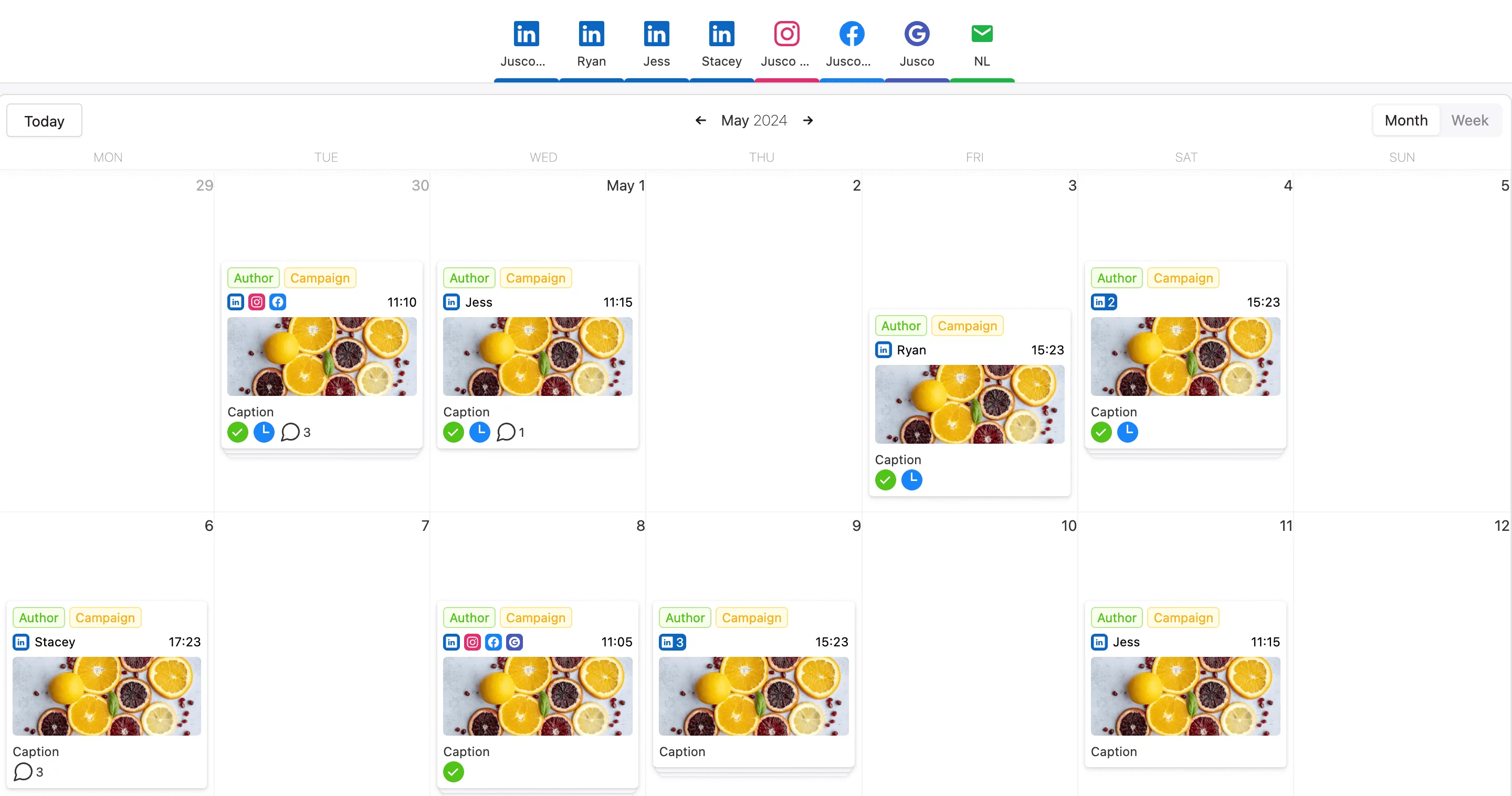
LinkedIn content planner template in Planable
With Planable, you can avoid all the posting schedule havoc that comes with feedback bottlenecks and simplify collaboration. Planable’s LinkedIn planner has an intuitive design that allows you to easily add things to the calendar and organize them with labels and filters. Plus, apart from LinkedIn, you can also add other channels, like social media profiles, blog posts, and newsletters, so you can easily manage all your content efforts in one place.
Wrap-up: LinkedIn planner for strategic growth
Professionals and businesses — especially B2Bs — can not ignore LinkedIn in their content marketing strategy. While random posting won’t get you far, a content planner is a sure way to maintain consistency and quality, improve engagement, and generate leads. Try Planable for free to see how easy it is to create and schedule LinkedIn posts that support your ambitious plans for growth.




